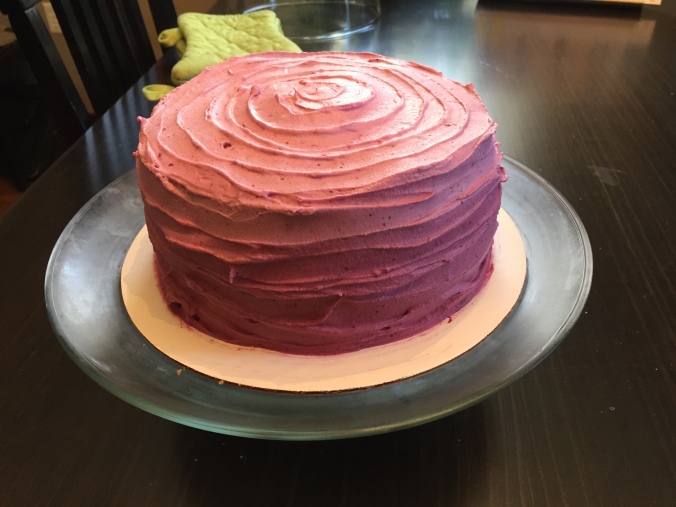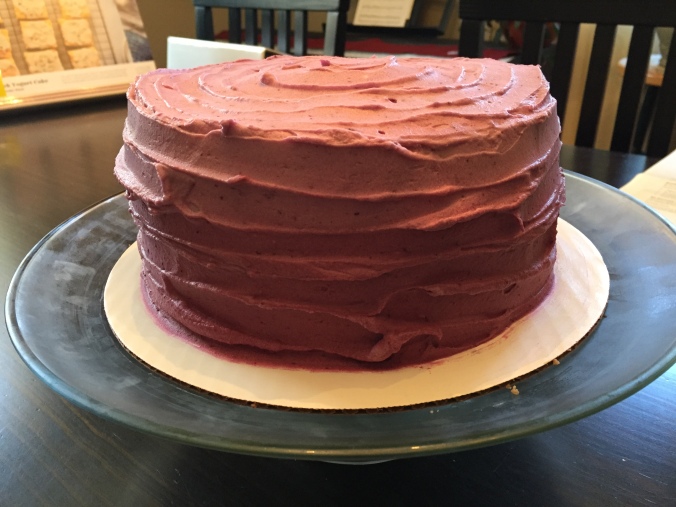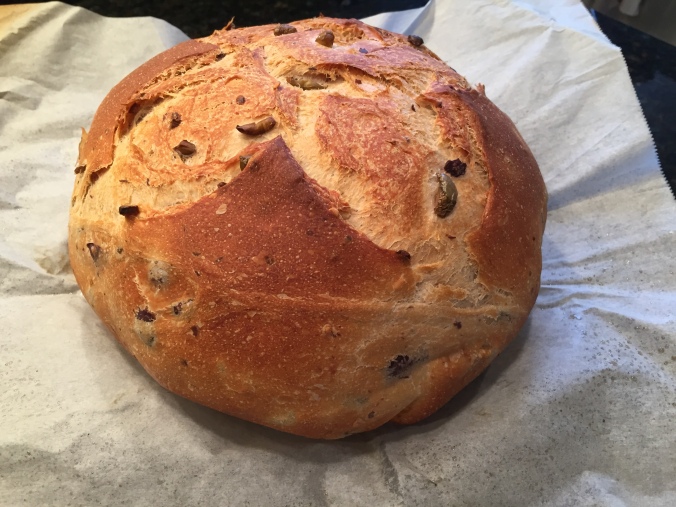I was not familiar at all with this particular bread, but it definitely appealed to me when I read the recipe. It is an enriched bread dough, with eggs, butter, and sugar, and it comes from Puerto Rico where is is eaten as a sweet bun with powdered sugar on it. I ended up not using the powdered sugar, but I can tell you, this recipe is a total winner, and I can’t wait to show you how I made it.

The ingredients include AP flour, yeast, salt, whole milk, eggs, sugar, and a ton of butter. I did the usual combining of the wet and dry ingredients, holding off on the softened butter.
By the way, here’s a tip. If you need softened butter at room temperature, and you forgot to set it out in advance (like I did), try this: Put the butter in the microwave at 50% power for 10 seconds. See how it is. Do another 10 seconds at 50%. It should be soft without having melted. Try it.

The dough took a while to really get cohesive, but it eventually did and pulled from the sides of the bowl. Next, you have to start adding the softened butter to the dough as it kneads. This part always gives me trouble, usually the dough just becomes a mess and won’t knead, and it is just so difficult to do. With this recipe, though, adding the butter bit by bit worked great, and I wasn’t even tempted to add flour or anything. I let the mixer do its thing and the butter got incorporated really well.
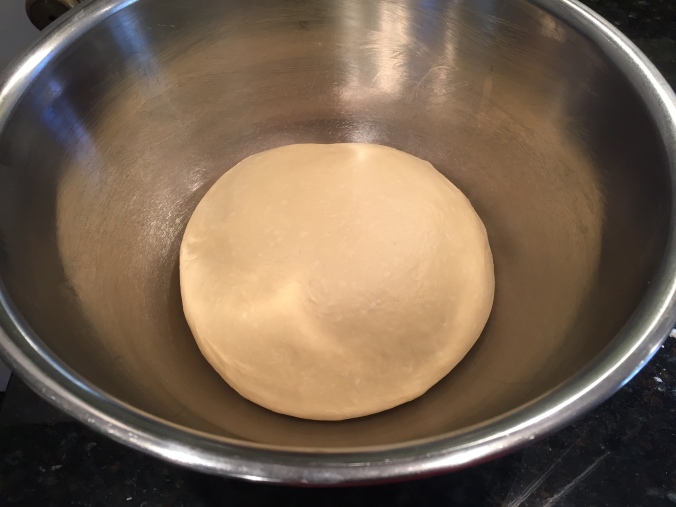
This was a large amount of flour – 5 cups – so I set the dough to rise in a large bowl, and it said to let it rise for 2 hours, which I did. After two hours…

It rose great! It takes up the entire bowl. Also, the dough was soft and cool, and really easy to work with.
I cut the dough into 2 pieces, and worked with one piece at a time. I rolled it out, spread melted butter on it, and then rolled it into a tube. I should have rolled it tighter than I did, so my advice here is to roll it tight.
The next step was you cut the dough into 6 pieces, roll each piece into a longer tube and roll it up into a spiral roll. This was easier said than done. The smaller pieces of dough did not want to roll out. Thinking about it now, I think the gluten was not relaxed. I needed to let them rest at this point, but I didn’t do that. So my advice here next is to let them rest before you re-roll each bun.

Here are my rolls set out for the second rise. They look ok, but not perfect by any means. I tore a lot of them by forcing them to roll out. Again, I should’ve given them time for the gluten to relax. I let them rise again for 2 hours, so they would double in size.

After the second rise, they got really huge again and they were ready for the oven.

They baked up great and smelled wonderful. They are meant to be eaten as a dessert I think, but I ended up eating them with dinner and sliced as a sandwich. They were delicious! Excellent. This is just the way I love bread. Rich and slightly sweet. Seriously these were delicious. I also ate these toasted and with some nutella on them, and let me tell you, that was also like heaven.

This is an amazing recipe that I highly recommend. I give it another enthusiastic 5 out of 5 stars. If you ever are in a Puerto Rican bakery and you see these buns with powered sugar, make sure you try one. Thanks for reading and I’ll keep on baking.


























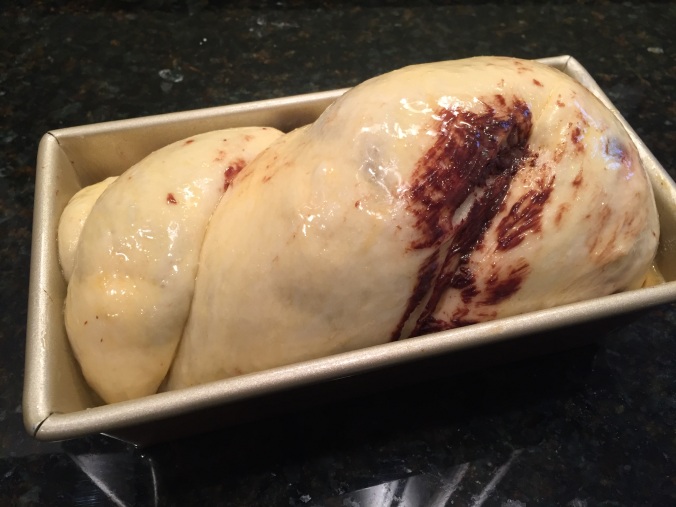 The last step was to bake it. It took a while at a lower oven, 350 degrees for 45 minutes.
The last step was to bake it. It took a while at a lower oven, 350 degrees for 45 minutes.








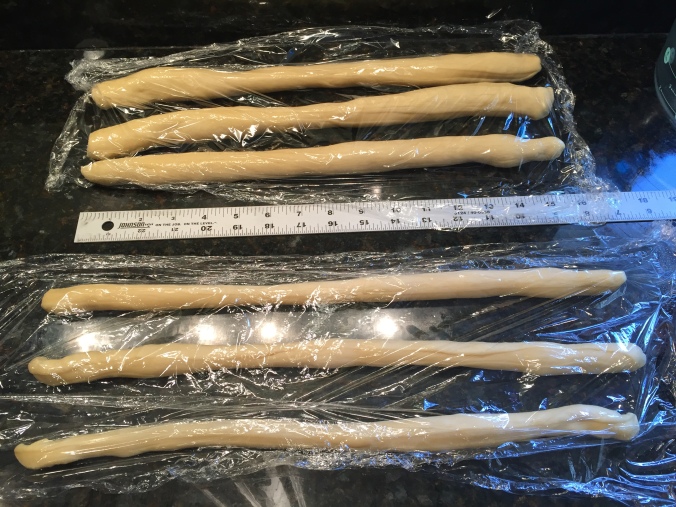





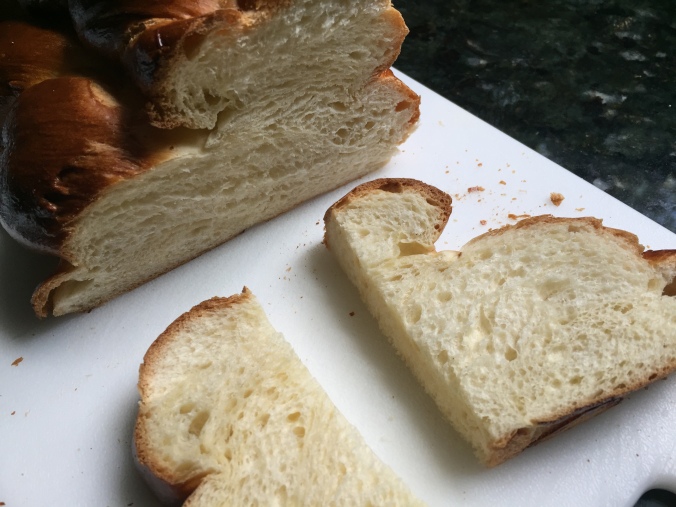














 This recipe requires a “sponge”, which is bread flour, water, and a small amount of yeast. You mix these until combined, and then you let it sit on the counter over night. This builds up flavor molecules in the sponge which will give the final bread more depth — or so they say. Who are they, you ask? Them. The bread makers.
This recipe requires a “sponge”, which is bread flour, water, and a small amount of yeast. You mix these until combined, and then you let it sit on the counter over night. This builds up flavor molecules in the sponge which will give the final bread more depth — or so they say. Who are they, you ask? Them. The bread makers.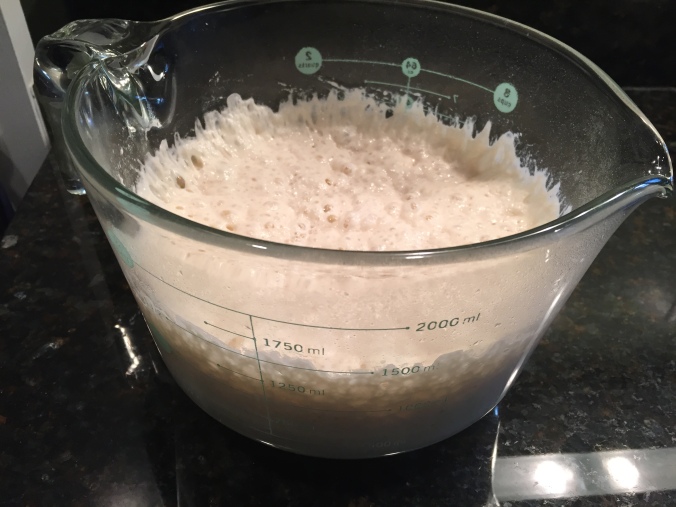



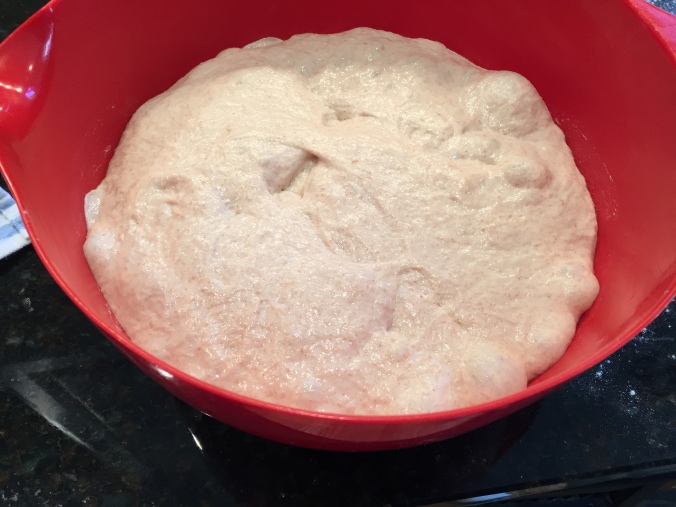



 As you can see from the finished loaf — it is flat, and does not have the necessary outer “gluten-cloak” which is really needed for the structure of the bread. I broke the gluten cloak when I ripped the dough free from the towel. So it basically turned out looking like a huge pita bread.
As you can see from the finished loaf — it is flat, and does not have the necessary outer “gluten-cloak” which is really needed for the structure of the bread. I broke the gluten cloak when I ripped the dough free from the towel. So it basically turned out looking like a huge pita bread.
